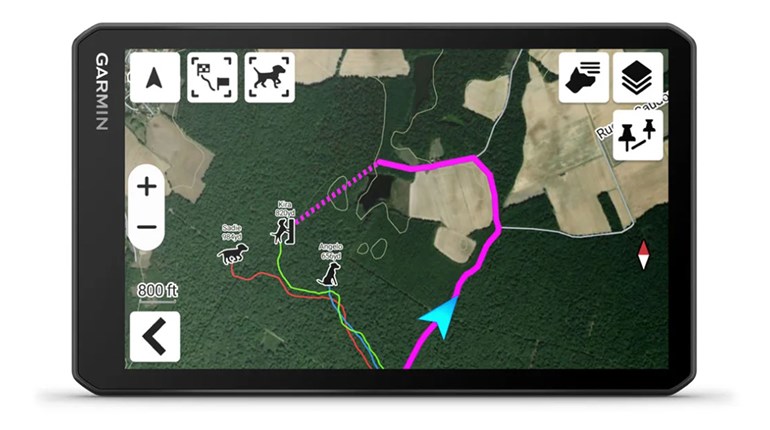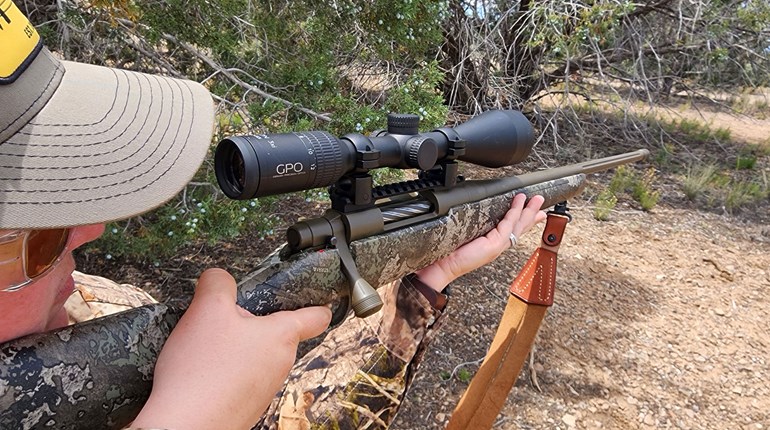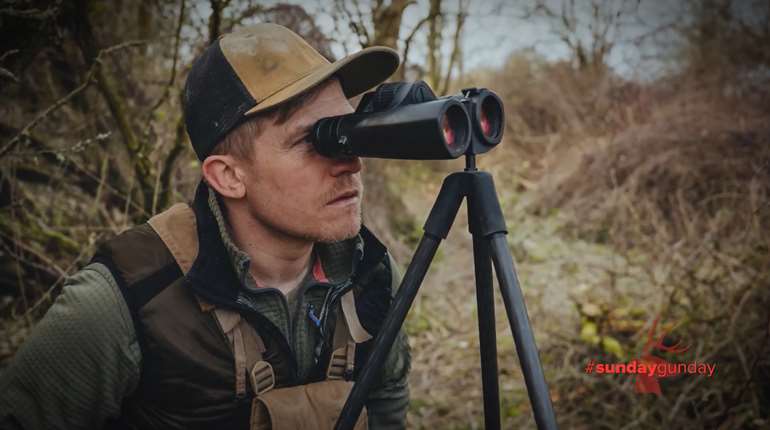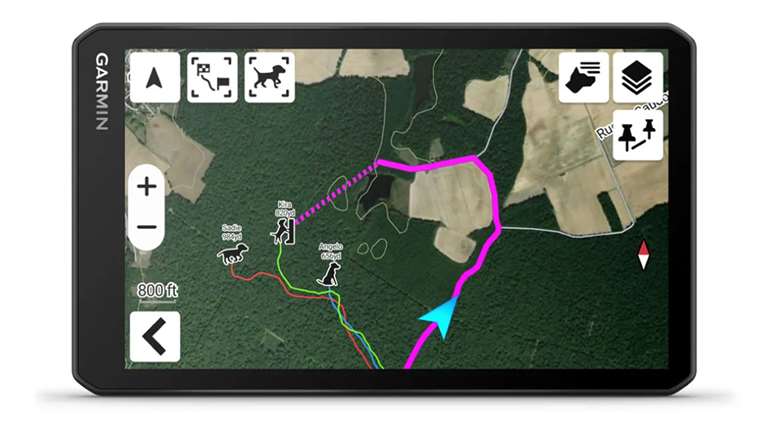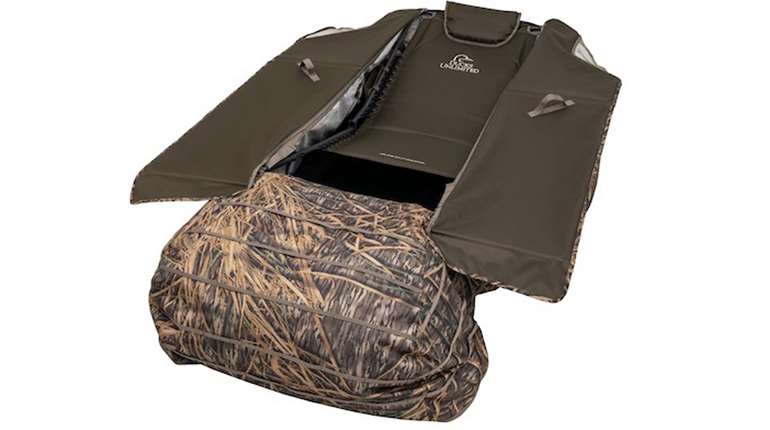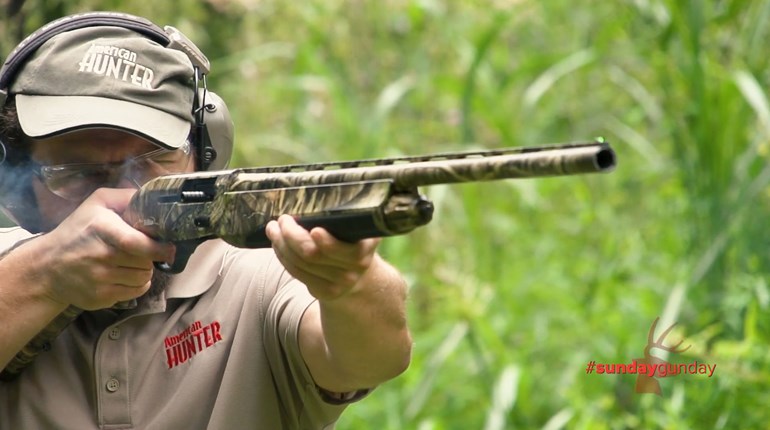
No whitetail that hears a bowstring’s slap at close range pauses to weigh its options. And no deer that hears a coat sleeve catching on overhead bark seeks second opinions.
In the first case, the deer instinctively drops low and springs into flight, sometimes never looking back to see what scared it. In the second case, the deer typically snaps to attention, its ears swiveling and triangulating while its eyes and nose probe for answers.
Unless you’re hunting with a firearm and it’s already shouldered, you’ll likely have to concede the contest or risk a running shot. When deer hear unnatural noises inside their innermost security boundaries, they instinctively flee or snap to full alert. If they don’t interpret the noise as pending danger, it might be the last threat they ever take lightly.
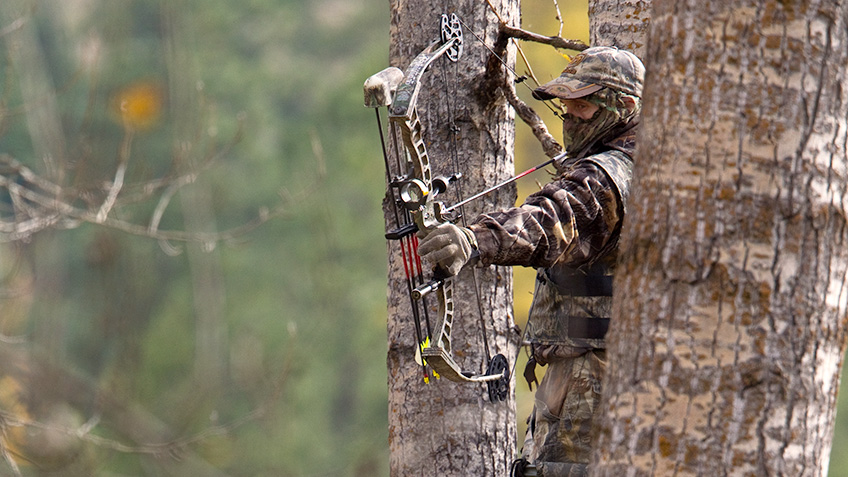
Likewise, hunters shouldn’t discount the deer’s ears, even though most of us rank this defense No. 3 behind its nose and eyes. Yes, deer must be downwind of danger for their hypersensitive nose to detect the threat. And yes, deer have a 60-degree cone of vulnerability behind them when their side-mounted eyes look forward. But sounds can be altered, slowed, accelerated, suppressed or amplified by several environmental factors.
Those influences on noise include wind, humidity, air temperature, vegetation, ground cover, overhead foliage and which way the deer’s radar-dish ears are pointed at any given moment. Therefore, even though deer ears can monitor their entire 360-degree surroundings, this defensive shield has variables and vulnerabilities that often require translation or confirmation from the deer’s other senses.
Deer vs. Human Ears
In fact, a deer’s actual hearing abilities aren’t all that much better than the average human. Researchers at the University of Georgia in 2006 conducted “auditory brainstem testing” in hopes of learning the whitetail’s minimum hearing capabilities. These tests involved immobilizing deer with drugs, placing electrodes on their heads and monitoring results on computer screens to analyze how a deer’s brain responds to various sound frequencies.
The study’s lead researcher, Gino D’Angelo, and his team learned a deer’s hearing range extends from .25 kilohertz to 30 kHz, but it hears best in the 4 to 8 kHz range, which overlaps the primary sound range of the whitetail’s vocal communications. Specifically, of 12 identified whitetail vocalizations in previous research, most had frequencies of 1 to 8 kHz.
Those frequencies differ little from human hearing, which is best between 2 and 5 kHz, with an upper range of about 20 kHz. Still, the UGA researchers noted that deer can detect higher noise frequencies than humans, but pinpointing that exact high-frequency range required further research they couldn’t conduct.
Brainstem tests are limited by science’s ability to detect physiological responses. In other words, those tests can’t account for how deer interpret information they detect with their other senses. Assessing those capabilities requires behavioral research, which isn’t easy when studying wild animals.
It’s less trouble to study human hearing, because people can press buttons or raise fingers to indicate when they hear specific sounds played through headphones. To better assess the whitetail’s actual hearing range, researchers must somehow train deer to give reliable “behavioral” responses when they hear various sounds at different levels.
A research team in Ohio—audiologists Henry E. Heffner and his son Henry Heffner Jr.—devised a solution in 2010 by training two captive female deer at their farm to drink from a metal bowl. They wired the bowl to mildly shock the deer after “warning” them with sounds of various frequencies and decibel levels. The shock wasn’t strong enough to make the deer avoid the bowl. The deer learned they could drink until hearing the sound. The deer then broke contact with the bowl, and resumed drinking when the sound quit.
The Heffners’ painstaking tests eventually pinpointed the whitetail’s hearing range from .115 kHz to 54 kHz. Further, by increasing the sound’s intensity to over 90 decibels, they learned the deer’s hearing range reached 64 kHz. The Heffners’ conclusion: Deer have better high-frequency hearing than do humans, but worse low-frequency hearing.
Similar Hearing, Different Ears
Dr. Karl Miller, D’Angelo’s adviser during his 2006 research at UGA, said the bottom line of both studies shows that a deer’s hearing capability resembles ours.
“The hearing-range curves on audiology charts are almost identical,” Miller said. “They’re just shifted about 10 kHz. Deer likely hear higher-frequency sounds better than we do, and we might hear the lower frequencies better than they can, but there’s more to it than that. Most humans taking hearing tests are at least 40 to 50 years old, and some of us can’t hear those higher frequencies anymore. The deer in the Heffners’ tests were 1 and 2 years old. Deer don’t live long enough to lose their high-frequency hearing. So it’s still hard to make foolproof comparisons.”
Even so, how can deer use “human-like” hearing to duck lightning-fast arrows, detect whiskers rubbing collars and pinpoint calling or rattling sites deep in a forest or a half-mile away across an alfalfa field?
One distinct advantage deer have: large, maneuverable ears that can independently monitor their surroundings. In contrast, human ears are small and fixed. To improve our ears’ “catch,” we must turn our entire head and cup a hand to direct sound into the ear pointed toward the sound’s source. We can’t focus both ears on one site.

Those design features sometimes work to our advantage, though. When a deer’s ears aren’t pointed toward the sound’s source, they lose some of their ability to hear sounds in the opposite direction. Still, they can continually monitor their surroundings by working their ears in different directions, forever searching and scanning for danger.
Likewise, by being able to work their ears independently from various angles and directions, they can precisely assess the distance and location of noises. And the louder and more sustained the noise, the better they pinpoint it.
Deer Know Natural Sounds
Miller said deer are also extremely tuned into their turf. Because they live in a potentially deadly environment every minute of their lives, they learn to expertly interpret noises. If a sound is out of place, they go on red alert.
“All of us have seen deer barely pay attention to falling branches or squirrels rustling in the leaves,” Miller said. “Deer know what they’re supposed to hear. We can’t match that skill, but we do pretty good in our own environments. We notice unusual rattles, bumps or engine noises in our own vehicles that our passengers don’t notice; and we can probably tell a dime from a nickel bouncing off our kitchen linoleum. So when we see deer react to distant sounds we didn’t hear, it might not mean they hear better than we do. They just know what’s normal, and they can filter noise and sounds that are important to them.”
One unnatural noise that alarms deer is a bow unleashing an arrow. Even though bowhunters affix vibration dampers, bowstring silencers and bowstring stops to their recurves and compounds, deer commonly “jump the string.”
TV shows and videos often explain those frustrating misses using a red dot on the deer’s vitals, and a red line atop the spine to show its position at the bowstring’s release. Those reference points are left hovering in the air a split-second after the release as the deer coils into the ground to load its muscles while the arrow zips harmlessly over its back. In the next instant, the deer springs to safety.
‘Jumping the String’
Dr. Grant Woods, owner/creator of "Growing Deer TV" and The Proving Grounds in southwestern Missouri, set out in summer 2018 to learn how far deer “squat” at an arrow’s release. He also sought to learn where arrows flying at varying speeds strike or miss a ducking deer. (Watch a video regarding the study at growingdeer.tv by searching for “jumping the string.”)
Woods worked with Darren Cummings, a Pennsylvania engineer and bowhunter who created a machine that pinpoints the instant an arrow is released. The device then calculates how long it takes sound to travel 20, 30 and 40 yards; and documents how low and fast deer drop at those ranges with arrows flying at different speeds.

Woods reduced his compound’s weight to shoot arrows at 258 fps. An intern shot an 80-pound bow that generated arrow speeds exceeding 308 fps. They also shot a compound bow generating speed of 276 fps.
Using water balloons, which drop at the speed of gravity—the same speed deer drop when coiling to leap—Woods found the balloons didn’t fall out of the kill zone at 20 yards for any of the bows. The balloons dropped 2.5 inches by the time Woods’ arrow arrived at 258 fps, but only about a quarter-inch for the faster arrows. At 30 yards, the balloons dropped 6 inches, beneath the kill zone for Woods’ bow; but only 2.25 inches for the midrange bow and 2 inches for the 80-pound bow.
At 40 yards, a deer could have dropped over 10 inches by the time Woods’ arrow and the other compound’s arrow (276 fps) arrived, and over 5 inches by the time the arrow arrived from the 80-pounder (308 fps).
Those tests proved to Woods that he shouldn’t shoot past 20 yards unless he starts shooting a faster bow.
Quieting Clothing
Science and technology might never make bows quiet enough to defeat a deer’s hearing, but advances in fabrics are quieting our hunting clothes. Miller, for example, used his deer-hearing expertise to help Sitka Gear make its current Fanatic clothing lineup twice as quiet as its predecessor. Both Fanatic lines use Windstopper technology, and are designed for white-tailed deer hunters in treestands.
Miller and James Black, an acoustical engineer and instructor from Montana State University, monitored a soundproof room kept at minus 4 degrees Fahrenheit as five “hunters” wearing old and new Fanatic systems took turns simulating movements deer often hear. These motions included drawing a bow, brushing up against tree bark and pulling a rangefinder from a pocket. Why keep the soundproof room below zero? Extreme cold usually makes clothing fabrics noisier, and sound travels farther in cold air.
The tests documented that audible noises made by Sitka’s new fabrics were half as loud as those made by previous fabrics. At bowhunting ranges, cutting audible noise from 40 yards to 20 yards makes a huge difference in defeating a deer’s ears. And as testing proves, it can be the difference between a clean kill and a lost or, even worse, a wounded animal.
“It’s pretty amazing,” Miller said. “You could tell the difference just running your hand across those two fabrics. This is all about reducing the deer’s ability to detect you when you move in a treestand in the cold, quiet conditions that hunters —especially in the North—often encounter. Sound carries easier on cold, quiet days when deer can hear a whisper a long ways. When deer hear something they know they shouldn’t be hearing, they react. Alert deer are hard to kill.”
Conclusion
Another well-known Miller seconds that opinion. Veteran deer hunter Greg Miller of Wisconsin has long said that deer trust their ears as much as their nose in some conditions. For instance, when bucks respond to distant grunt calls or antler rattling on calm days, they come in knowing they can’t confirm the sound’s source by circling downwind. But they can pinpoint the site based on what they heard with the swiveling “radar dishes” atop their heads.
Miller recalled a cold, calm day in the Northwoods 30 years ago when he rattled in three bucks in one morning from his treestand. One of the deer, an impressive 150-inch buck, came in to about 15 to 20 yards, but quickly grew suspicious and fled.
“We weren’t using decoys back then, so when that buck came in, it didn’t see anything where it heard the commotion,” Miller said. “It knew what it heard, and knew where the other deer should be, but nothing was there, so it left fast.
“Whitetails trust their hearing,” Miller continued. “When you try to fool their ears, you better be ready to shoot them right away when they come in.”
You might wonder why university researchers and others tried to assess a white-tailed deer’s hearing ability the past 40 years.
Consumer-based concerns spurred several studies: Can deer hear high-pitched sounds supposedly made by “deer whistles” mounted on the front of cars and trucks? And if so, do deer flee the sound by running the opposite way?
The whistles’ effectiveness proved difficult to assess, partly because some whistles didn’t produce any sound at any speed, while others produced sounds, but not necessarily the high-frequency noises the manufacturers advertised.
As University of Georgia researcher Sharon Valitzki wrote in 2007: “Previous research on vehicle-mounted auditory deterrents was confounded by use of commercially produced devices lacking proper function and sufficient sound intensity to be audible to deer in roadway conditions.”
Therefore, Valitzki and her team used vehicle-mounted speakers on its front and sides to broadcast high-frequency noise in the deer’s known hearing range as the vehicle moved along. After documenting how 319 deer responded, Valitzki concluded the reactions did not prevent accidents.
Roughly 60 percent of the reactions were “neutral,” meaning the deer simply didn’t react to the passing vehicle. Only the lowest frequency sound, at .28 kHz, produced a “significant” response. Unfortunately, it made the deer more likely to move onto the road.
Valitzki concluded: “Auditory deterrents do not appear to be appropriate for prevention of deer-vehicle collisions.”












